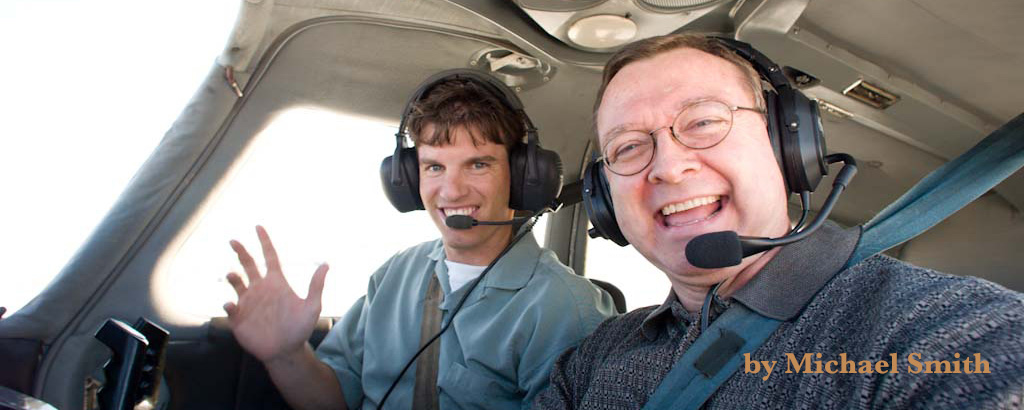How many times have you ended a period of instruction by addressing a student, a class or even an entire audience with the ever deafening “Are there any questions?” and your query was met with shaking heads, blank stares or checking of messages on mobile phones? It is always likely you’ll have at least a few in the crowd who might have missed out on the caffeinated beverages prior to class. However, our aim as instructors is to engage our students; and not be satisfied with simply dictating what we find in texts and other materials.
I’m fortunate to have nearly seven years’ experience providing ground instruction to both pilots and air traffic control trainees in the United States and abroad. It never ceases to amaze me that aviation people are truly the best folks to talk to and interact with.
As an instructor, I strive to connect with my students as if my next word were the most important thing they will ever hear in their careers. So a simple head nod is not acceptable feedback – we must seek out their questions and participation! Aggressively, if need be. But how do we apply these principles to our everyday teaching experiences? What tactics or techniques can we use to ensure that our audience, whether an individual or a group, is engaged in a positive transfer of learning?
Humbly submitted for your review is my own Educator’s Critique. I use it to prepare for an upcoming lesson or session, and also as a debriefing tool in which I ask myself if the following events took place during the period of instruction:
Am I (or was I) as prepared for the lesson as I want(ed) my students or audience to be?
Has it been a while since you taught the theory of VOR navigation? Be sure to brush up on it, yourself, and have your own thoughts or skills polished before stumbling through a lecture or briefing. Your listeners deserve the best effort.
What are my primary learning objectives for this lesson?
Have a clear goal in mind before the student either steps in the classroom or climbs into the aircraft. Write down and say out loud, “The objective for this lesson is…” so it is clearly understood what is expected of yourself and the student. So many times I have seen it taken for granted that a student knew the intended objective and only became more confused as the lesson wore on. And if you are a student pilot or in advanced training with an instructor that seems to be off-track from the plan – speak up!
What are the learning objectives that support this lesson?
Was there a previous lesson that laid the foundation of the lesson you are about to present? It should be reviewed, if necessary, before starting with the next lesson in sequence. This can be accomplished by informal quizzing, group discussion, or a student-led lesson where one of the stronger students (if in a group setting) is asked to present the previous idea or objectives in their own way.
Am I ready to give a truly dedicated and high-energy effort throughout the lesson?
Similar to the PAVE Checklist provided in the Pilot’s Handbook of Aeronautical Knowledge, Chapter 17, are you ready to walk into the classroom or to the aircraft with the intent to deliver your absolute best effort? Do you feel physically and mentally healthy? Is the flight or mission acceptable to your own personal minima? If you are a flight instructor at a recognized flight school and taking a student for a dual cross-country flight, are you also ready to represent the flight school at every airport you visit and every potential new student you may encounter? First impressions count and can set the tone for the entire day.
Will I engage the student in practical activities, scenario-based training, group discussion or team-building exercises to promote learning?
Why spend 45 minutes trying to explain what the inside of an aneroid barometer (aka: altimeter) looks like? Perhaps there is a mechanic on the field or at a nearby FBO who would be happy to show your students first hand an actual disassembled altimeter or let you borrow it for your class! Pictures are worth a thousand words but experiences are what form the poetry of learning.
What feedback do I expect to receive at the end of the lesson, or at some time before the next lesson?
Learning should not end when you are finished speaking or when the aircraft has been secured at the ramp. Keep the conversation going and look for signs of non-verbal feedback such as smiling or eye contact. Even pursed lips can send a loud message; a silent red flag that something has not gone according to plan. If a student seems reluctant to provide any indication of their own opinion of the lesson, ask for it! Ask questions like “What was your favorite part of today’s flight?” or “How can I make this lesson or topic more interesting for you?” They are completely appropriate during a debriefing session or at the end of a day in the classroom.
-As aviation instructors, we will encounter people from many different walks of life, many different cultures and countries. No two students or pilots are the same, and we must do our very best to connect with and learn to suit the individual needs of each student (or potential student) we meet. This forms the basis of a professional relationship between an instructor and student and sets the stage for a successful teaching and aviating career!

